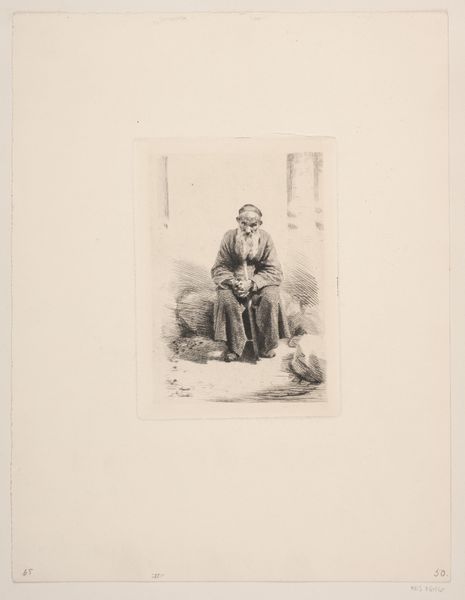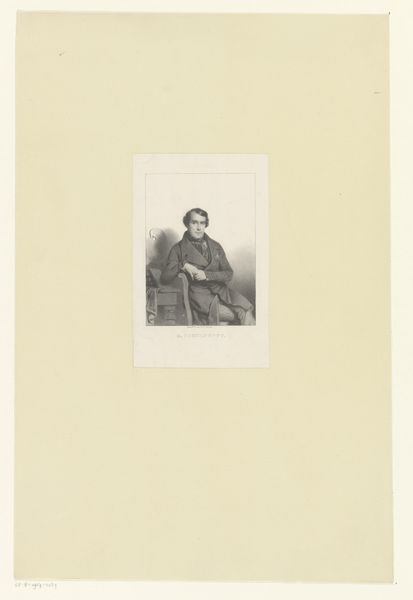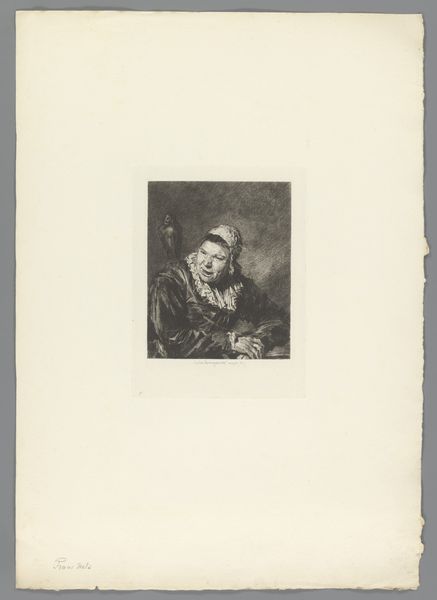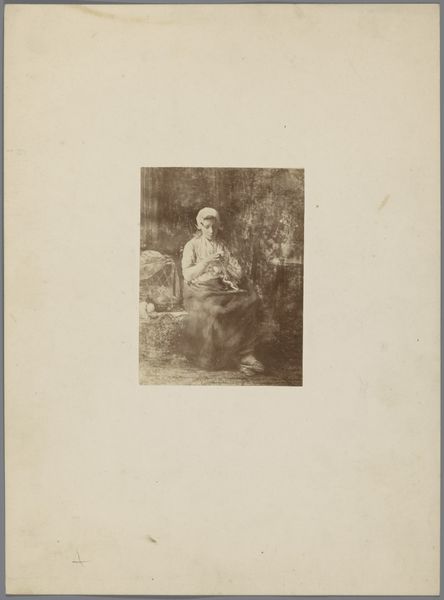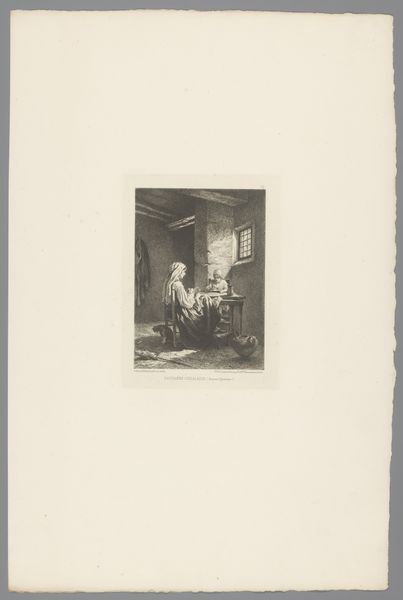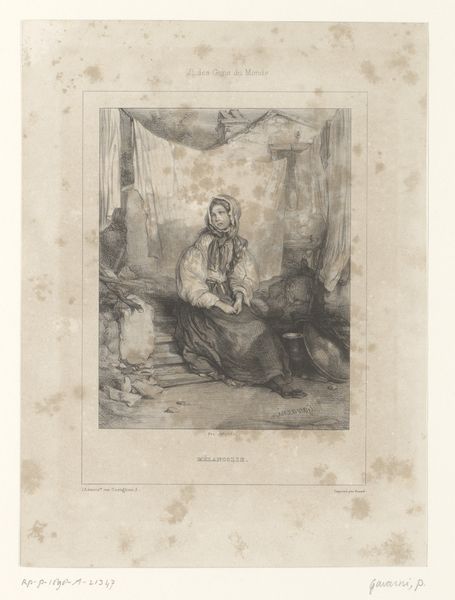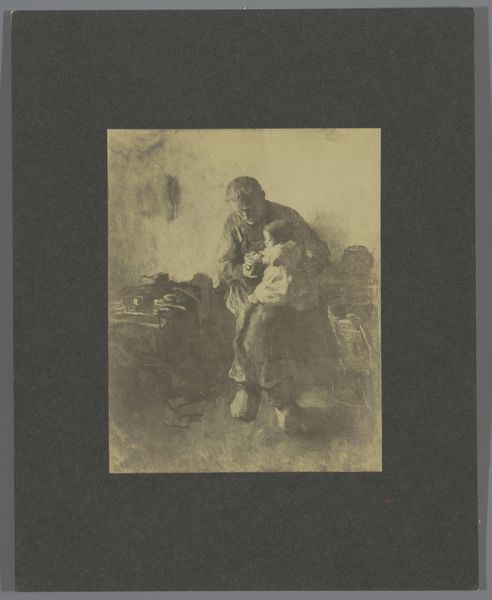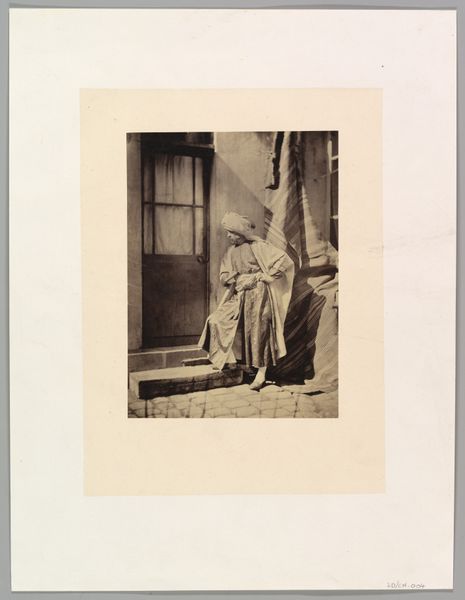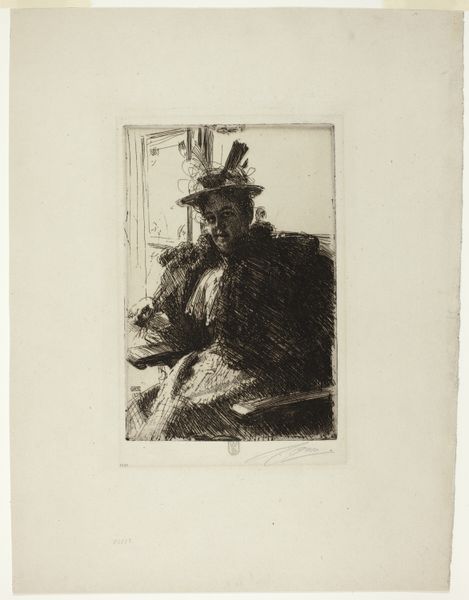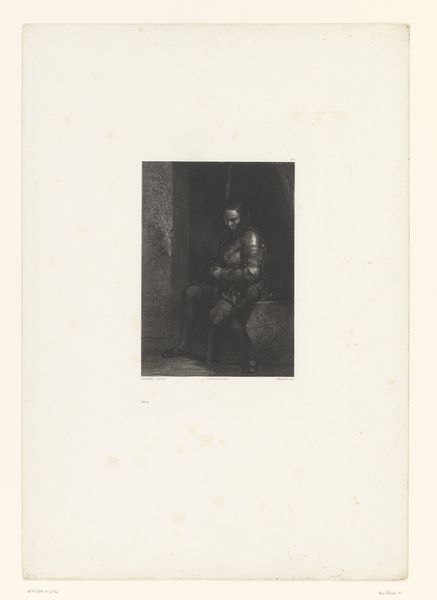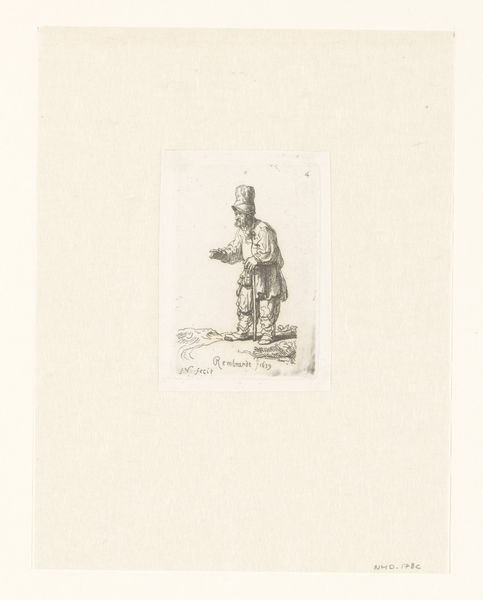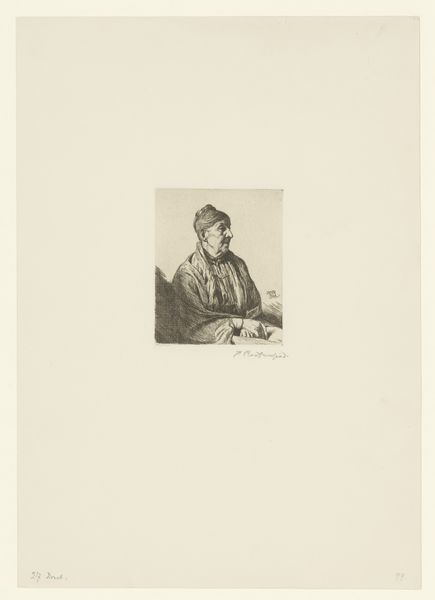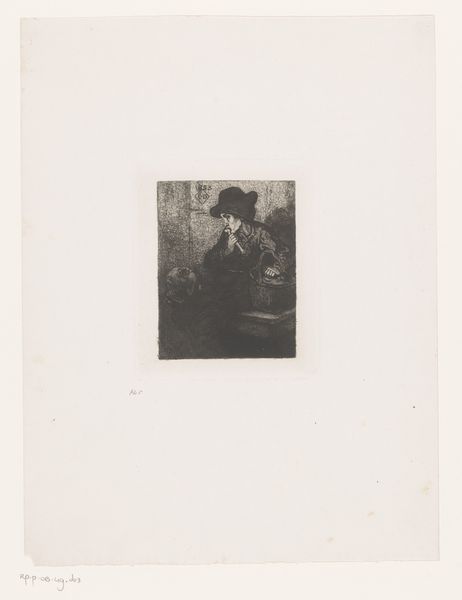
print, etching
#
portrait
# print
#
etching
#
orientalism
#
genre-painting
#
realism
Dimensions: 179 mm (height) x 130 mm (width) (plademaal)
Editor: Here we have Frans Schwartz's 1901 etching, "Gammel orientaler," or "Old Oriental Man". The stark monochrome and intricate lines give it a pensive, almost melancholic quality. What can you tell me about this work? Curator: This piece, while technically masterful, invites a critical examination of Orientalism. Consider when and where it was made. What power dynamics are at play when a Western artist portrays a man from the "Orient" in this way? Does it perpetuate stereotypes or offer genuine insight? Editor: I see what you mean. His expression is unreadable. I'm making assumptions based on his age and what I perceive as his dress... Curator: Exactly! We need to question our assumptions. The 'Orient' wasn't a monolith, but a projection of Western fantasies and anxieties. What purpose did these images serve back then? How might they shape contemporary views? What do you notice about the figure's gaze, or lack thereof? Editor: He’s not engaging the viewer; he's turned inward. Was that a common trope? To portray the 'other' as mysterious and unknowable? Curator: Often, yes. It reinforced a sense of Western superiority and the exoticism of the East. This piece becomes a window into understanding the power of representation, who holds it, and the narratives they construct. How do you think we, as viewers, can challenge these power dynamics when looking at older pieces like this? Editor: By being aware, asking questions, and researching the context. I’ll definitely view "Gammel orientaler" differently now. Curator: Indeed, by questioning whose gaze we are adopting, we disrupt the historical narrative and become more conscious consumers of art and its loaded past.
Comments
No comments
Be the first to comment and join the conversation on the ultimate creative platform.
